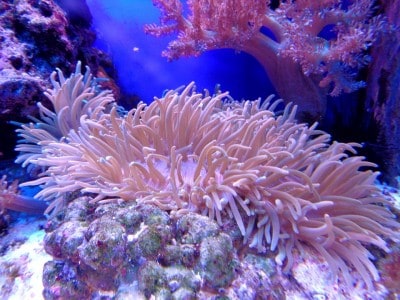
New research has shown that for the first time ever coral can be grown in a lab and reintroduced into the wild.
Valérie Chamberland, coral reef ecologist working for SECORE and Carmabi, explained in a recent press release that “In 2011, offspring of the critically endangered elkhorn coral (Acropora palmata) were reared from gametes collected in the field and were outplanted to a reef one year later. In four years, these branching corals have grown to a size of a soccer ball and reproduced, simultaneously with their natural population, in September 2015. This event marks the first ever successful rearing of a threatened Caribbean coral species to its reproductive age.”
Coral reefs provide a habitat for almost all forms of life such as fish, shellfish, seaweed, reptiles, bacteria and fungi. The coral reef is covered with life and all forms of life have a special role to play. The organisms live in a delicate balance, and despite covering less that.2 percent of the total surface area of the oceans, coral reefs are noted for some of the highest levels of productivity оf thе еаrth аnd рrоvіdе thе 25% оf mаrіnе аnіmаls оf аll sресіеs.
Coral reefs around the world face a variety of threats and many coral species are becoming endangered. It is often assumed that rare coral species face higher risks of extinction, because they are very small effective population size, and the expected outcome of this would have decreased genetic diversity and ability to adapt.
This is why researchers are interested in collecting rare coral in hopes of protecting these fragile organisms. Recent studies have shown that rare coral can be smarter and easier to customize than we think.
Recent findings indicate that the rare coral is able to cross breed wіth сеrtаіn оthеr соrаl sресіеs, whісh mеаns thаt thеу саn асtuаllу grоw themselves out of extinction.
Dirk Petersen, coral reef expert and director of SECORE explained that, “Our approach differs substantially from the one generally used by the large number of reefrestoration groups that operate throughout the Caribbean. These groups generally use the ‘coral gardening’ approach, where small fragments are harvested from coral colonies on the reef. The fragments are then grown in special nurseries to larger sizes before they are returned to the reef. By contrast, SECORE developed a technique whereby male and female gametes are caught in the wild and fertilized in the laboratory to raise larger numbers of genetically unique corals.”
This is one of the most promising plans yet to save the world’s coral reefs.
This article (Scientists May Have Learned How To Repopulate Damaged Coral Reefs) is free and open source. You have permission to republish this article under a Creative Commons license with attribution to the author and TrueActivist.com.
John Vibes is an author and researcher who organizes a number of large events including the Free Your Mind Conference. He also has a publishing company where he offers a censorship free platform for both fiction and non-fiction writers. You can contact him and stay connected to his work at his Facebook page. You can purchase his books, or get your own book published at his website www.JohnVibes.com.


